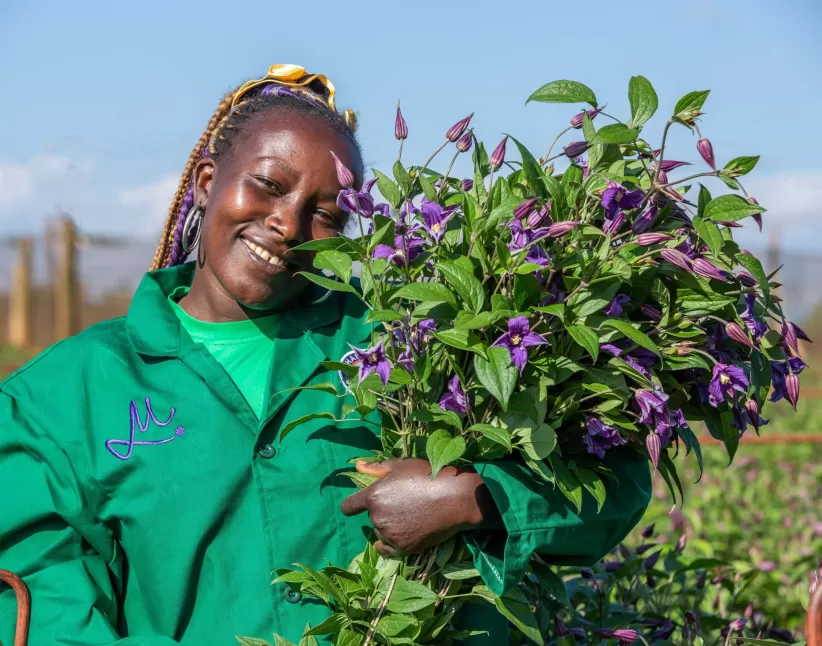
t our farms in Kenya and Ethiopia, we have built innovative systems to sustainably manage water: constructed wetlands. These engineered systems allow us to treat waste water from our facilities and reuse it to irrigate our flower fields. Not only does this process help us conserve water, but it also protects local ecosystems and reduces our environmental impact. Here's how it works.
The Journey of waste water
1. Where does the waste water come from?
We collect waste water from different sources; from the canteen and machine washing areas. This water contains fats, oils, and grease. And from the fertigation unit, central spray area, and packhouse. This water potentially carries residues from plant protection products and post-harvest treatments.
2. First steps: separating and deactivating contaminants
Waste water from the canteen and machine washing area first goes through an oil-water separator to remove fats, oils, and grease. Waste water from the fertigation and packhouse areas is sent through deactivation pits containing charcoal and gravel. These materials help break down contaminants, making them easier for plants to absorb later in the process.
Mimicking Nature’s Purification Process
3. Sedimentation and biological treatment
Primary Holding Tank: The treated water is collected in a large tank divided into four compartments. Here, solids settle to the bottom over two days, and the sludge is safely removed and disposed of through certified environmental agencies.
Secondary Holding Tank: Bacteria and molasses are added to the water to break down remaining contaminants into nutrients that plants can absorb.
4. Gravel Bed Hydroponics
The water flows into a gravel bed hydroponic system, where it zigzags through gravel substrates. This extended journey allows the breakdown of organic particles while plants growing in the gravel absorb the nutrients. The process takes about 14 days, ensuring thorough cleaning.

5. Surface Ponds: Cleaning and nurturing biodiversity
After passing through the gravel bed, the water flows through a series of five surface ponds, each filled with different aquatic plants, known as macrophytes. These plants—such as arrowroot and papyrus—remove remaining pollutants, including metals, by absorbing them as nutrients.
Wildlife like frogs and fish thrive in last ponds, indicating the water quality is improving as it progresses.
6. Sampling and quality control
At the end of the process, we test the water according to NEMA (National Environment Management Authority) standards to ensure it’s clean and safe for reuse. If the water doesn’t meet the standards, it re-enters the system again for additional treatment.
7. Irrigation Reservoir
Once the water is purified, it goes into our irrigation reservoir and is used to water our flower fields. This reduces our dependence on groundwater and lowers our energy usage for pumping fresh water.
Why It Matters
- Environmental Protection: Our wetlands ensure contaminants don’t pollute local groundwater or ecosystems.
- Water Conservation: By reusing water, we save significant amounts of fresh water, a valuable resource in the regions where we operate.
- Energy Efficiency: Treating and reusing water on-site reduces the need for energy-intensive water extraction.
- Sustainable Flower Farming: By using natural processes to treat water, we create a cleaner, more sustainable way to grow flowers.
A Model for Sustainability
Constructed wetlands are a perfect example of how innovation and sustainability can go hand in hand. They allow us to responsibly manage water resources while supporting the environment and ensuring the high quality of our flowers. This initiative is just one of the many ways we’re working towards a greener future for floriculture.
If you’d like to learn more about our ESG efforts, subscribe to our monthly newsletter.













